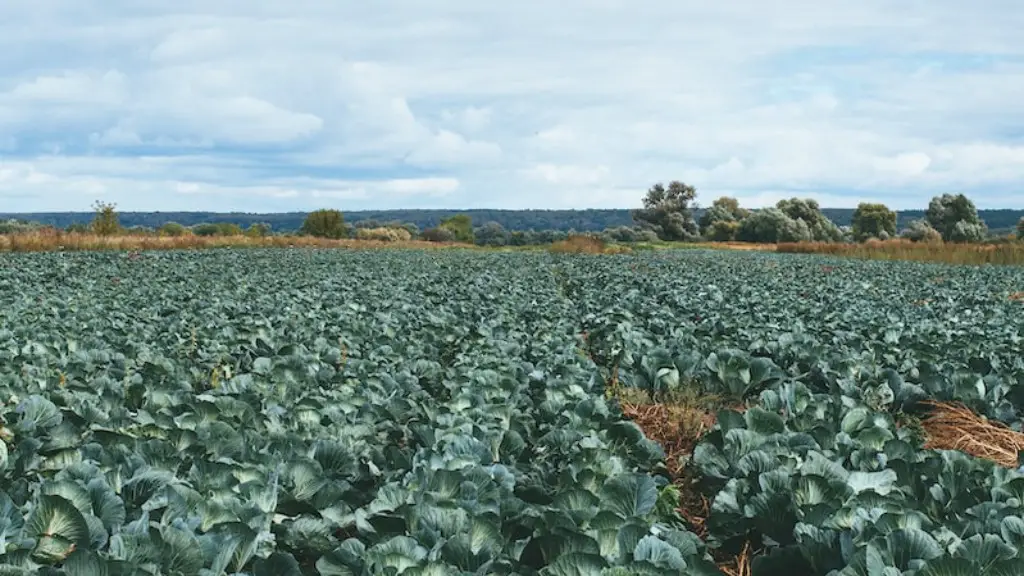For farmers looking to supplement their income or to just make things easier overall, there are several ways to achieve more income in farming. Achieving a profitable level of income from agriculture requires a combination of hard work, good planning, and effective management. With a few necessary changes, farmers can use the resources available to them to achieve a good income in agriculture.
The first step for achieving increased income in farming is to identify where your business needs improvement. Get creative and think outside the box when it comes to pinpointing areas of opportunity. Evaluate the yield and cost of your inputs, examine potential markets, and examine any potential alternative income streams. Make sure the proposed changes are cost effective and fit within the current farm infrastructure.
The next step is to decide how best to increase income. This could include expanding the number of crops grown, making use of biodynamic farming methods, investing in additional labour, or introducing new technologies. Additionally, research what businesses can be created on the farm, such as a Value-Added Products business. Different farm models, such as Community Supported Agriculture, or agritourism can be explored as potential ways to increase income.
It is also important to stay informed of business and agriculture trends. Keep up-to-date with new agri-business models, technology, and policies that affect the industry and determine if taking advantage of these new possibilities could be beneficial to your farm. The U.S. Department of Agriculture offers numerous resources to help farmers understand and use these resources, including the Small Business Administration’s Farm Loans and the Michigan Department of Agriculture’s Farmers Market Program.
Farmers should also establish a consultation program with their local cooperative extension, or consulting firm, to gain expert advice regarding on-farm operations, pricing models, new crops, or anything else that may affect the income of their farm. A consultation program can provide farmers with detailed information and support. Consider joining associations and engaging with organizations that specialize in agricultural business and income.
Finally, farmers may need to look for outside financial resources for increased income. The U.S. Department of Agriculture provides loan programs and grants that can help supplement income, providing additional resources to make a farm more profitable. Farmers should also consider seeking investments from sources such as crowdfunding or venture capital funds.
Expanding Through Technology
More farmers are also using technology to increase their income. Capitalizing on existing technologies can make a big difference in profitability. By utilizing technology, farmers can increase the effectiveness of their operations and improve workflow. There are many ways to do this, such as using the Internet of Things to connect tracking, monitoring, and control systems, agricultural drones to observe and map the land, or deploying data-driven decision support systems. These systems enable farmers to improve yield, reduce costs, save time, and use less resources.
These technologies can also help farmers reach new markets. By doing online marketplaces, farmers are able to reach customers around the globe and make it much easier to expand their customer base. In addition, agricultural technologies such as blockchain can be used to trace and certify products, providing customers with the assurance that their food is safe and reliable. Also, blockchain can enable farmers to better track their produce and capture more accurate price data.
Finally, farmers can also increase their income by utilizing mobile apps. These apps can help farmers manage their finances, increase efficiency, and keep track of their production data. There are many different types of apps to choose from, designed to meet the needs of farmers, ranging from payroll software to agricultural data management systems.
Exploring Alternatives
In addition to evolving with the use of technology, many farmers are turning to alternative income sources. These alternative sources of income may include growing additional crops, engaging in aquaculture, or diversifying into other products such as craft beer. Additionally, many farmers are exploring the emerging Cannabis industry, as it is quickly becoming a viable income source for many growers.
Agritourism is also becoming a popular way for farmers to increase their income. These activities include hosting farm tours, offering farm-to-table meals, and selling farm-grown products. Agritourism has become a significant source of income for many small farms and is often seen as a way to make an agricultural lifestyle more enjoyable, as well as more profitable.
Alternative income sources don’t just involve consumer-facing ventures. Farmers can also look into governmental subsidies and grants to help subsidize a farm’s income. Through governmental programs, farmers may be able to receive tax breaks, crop insurance, and other beneficial schemes. Many states and localities also provide assistance with marketing, marketing research, and other farm-related needs.
Finally, some farmers may be eligible for crop insurance, which could provide additional financial security and peace of mind. Crop insurance typically covers losses due to extreme weather, pests, disease, and other risk factors. This type of insurance can help farmers maintain a certain level of stability, even when faced with an unforeseen event.
Localising the Marketing
Localizing the marketing of farm goods is another way to increase income. In recent years, the idea of local and organic food has taken off, creating a huge demand for locally-sourced goods and groceries. Local stores are offering premium prices for goods that are locally-sourced. Farmers can take advantage of this by partnering with local stores, attending farmers markets and engaging in Community Supported Agriculture programs.
In addition to increased revenue, localizing marketing can also give farmers an edge on quality. Many consumers are looking for specific crops that are grown locally and in season. By engaging with local stores, these buyers can be targeted directly, allowing farmers to provide customers with more unique and higher-quality items that they wouldn’t be able to get from large-scale retailers.
Finally, localizing marketing can also help farmers build relationships with their customers. By engaging in communication directly with customers, farmers can create loyalty and a sense of community. This can help increase the success of sales and create a loyal customer base that supports the farmer’s business.
Streamlining Production
Farms can also increase their income by streamlining production. By investing in newer technologies and equipment, farmers can reduce labor costs and increase output. Automated systems and equipment may include automated irrigation systems, robot tractors and harvesters, and self-driving carts that can reduce labor costs and create more efficiency.
In addition, implementing precision agriculture practices can also help farmers increase their income. Precision agriculture is the practice of using modern technologies and data to optimize production and inputs. This can involve using precision tools to measure yields and soil nutrients, applying Drone-based imagery for precision agriculture mapping, and utilizing sensor-based data for monitoring crop growth and health.
Finally, farmers can also streamline their operations by utilizing modern technologies such as Artificial Intelligence and Machine Learning. These technologies can help farmers analyze data and make informed decisions. Additionally, AI and ML- powered apps can help farmers automate processes and make predictions based on past experience.
Exploring Capital Sources
Finally, farmers can increase their income by exploring different capital sources. There are several organizations and resources available to assist farmers in the process of finding capital investments. These can include the U.S. Department of Agriculture’s Rural Business Enterprise Grant Program, rural development loan funds, and traditional bank loans.
Farmers may also want to consider looking into venture capital and Angel funding as potential sources of capital. Angel investors are typically wealthy individuals who invest with the expectation of higher returns. Venture capitalists are businesses or investment firms that invest in businesses expected to achieve long-term growth. These investments are typically made in exchange for a portion of the business’s ownership.
In addition to traditional lenders and private investors, farmers may also want to look into microloans, grants, and other financing sources. Non-profit organizations such as the Environmental Protection Agency and the Farm Credit System offer programs that can help farmers obtain the necessary capital to grow their operations.
Finally, farmers should also explore existing programs within their communities to obtain capital. Cooperative Extension can provide helpful advice and resources on capital sources, including local lending institutions and government programs. By exploring these available resources, farmers can gain the necessary capital to start, grow, and expand their operations.





